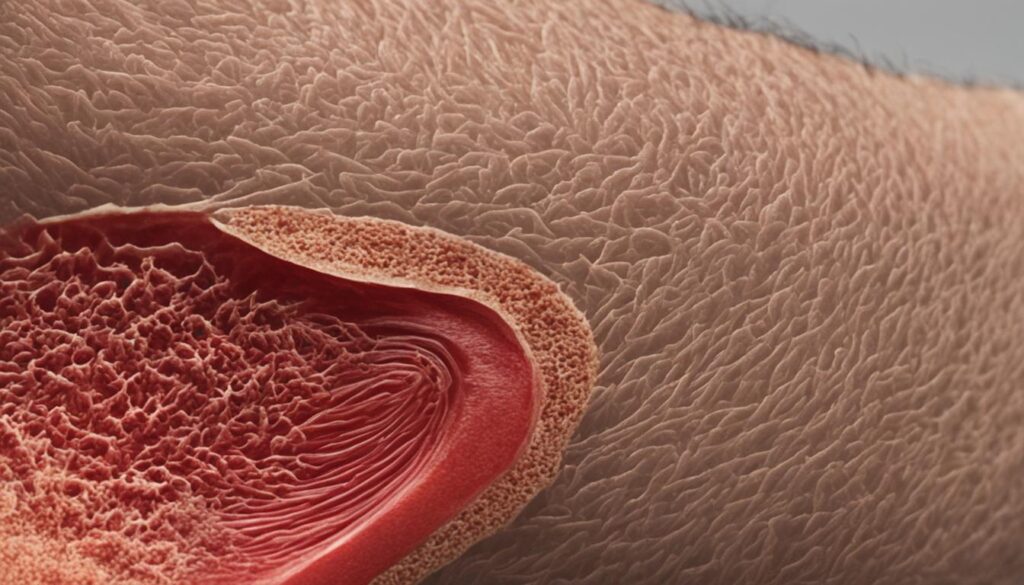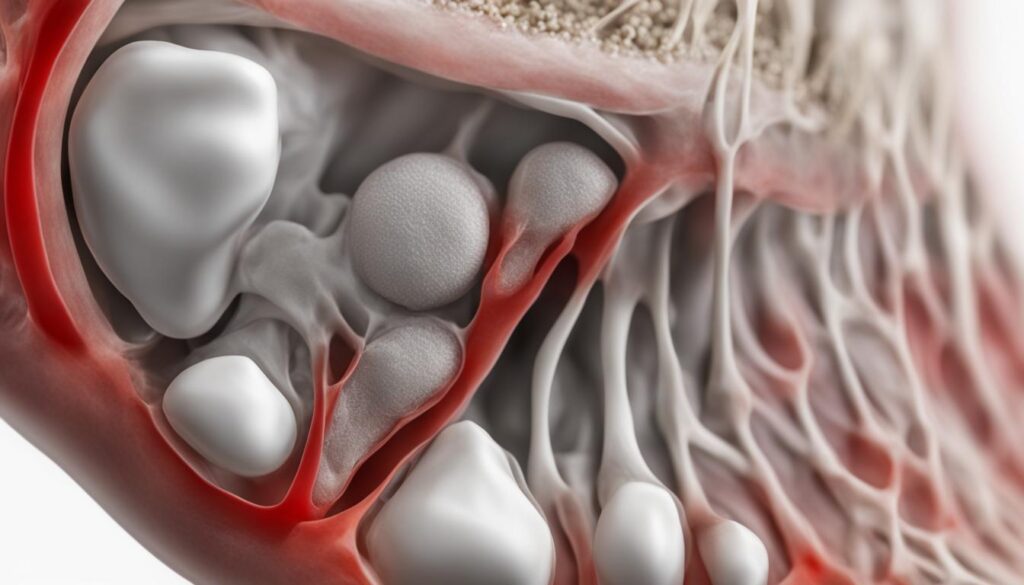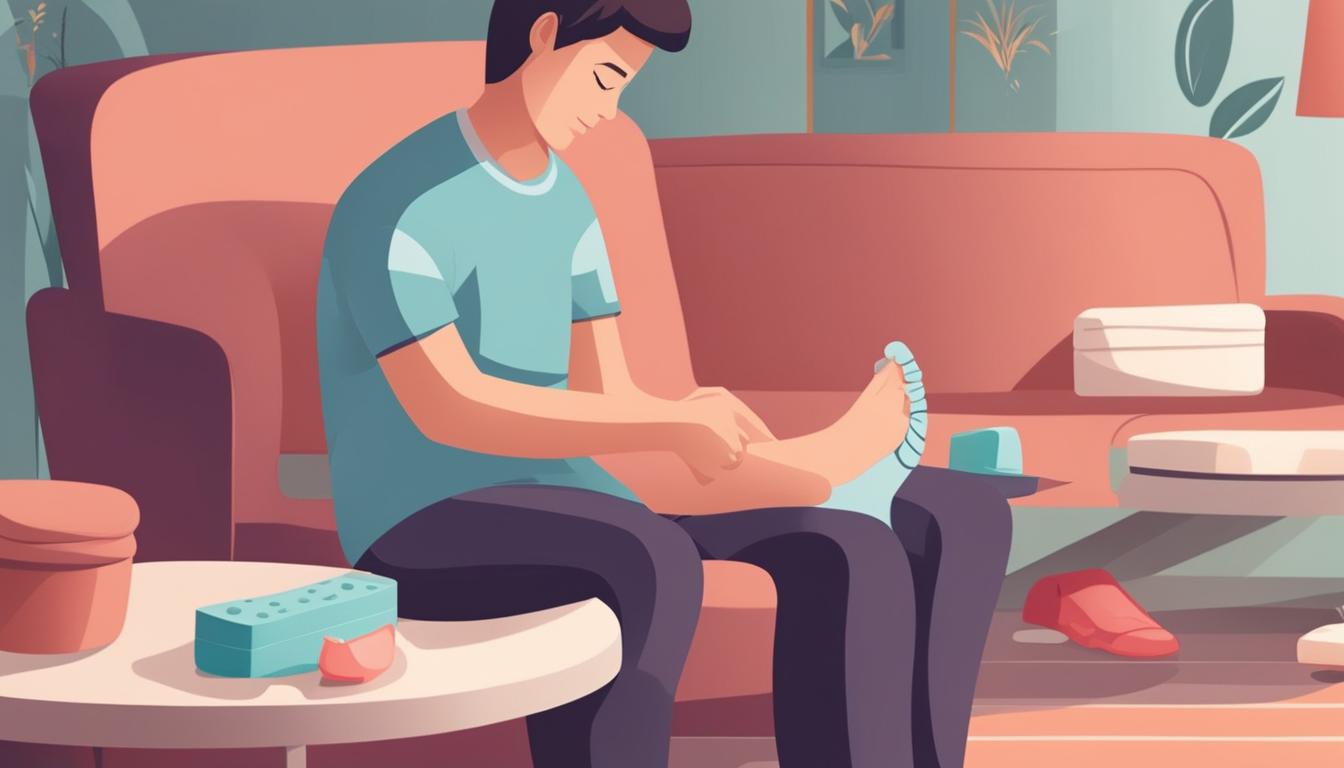Discover Effective Solutions for Foot Pain Relief With Us.
Are you tired of dealing with foot pain on a daily basis? We understand how frustrating and debilitating it can be. That's why we're here to help you find the most effective solutions for foot pain relief. Whether you're suffering from plantar fasciitis, heel spurs, Achilles tendonitis, or any other condition causing foot pain, we have the knowledge and expertise to guide you towards the right treatment options.
Foot pain can be caused by various factors, and it's essential to identify the source of the pain in order to determine the best course of action. From rest and stretches to over-the-counter pain relievers and supportive shoes, there are numerous remedies available to alleviate your foot pain. In some cases, medical procedures or surgery may be necessary to provide long-term relief.
With our comprehensive guide, you'll gain insights into different foot pain conditions and their respective treatment options. We'll cover everything from plantar fasciitis and heel spurs to Achilles tendonitis and stone bruises. We'll also delve into managing conditions like psoriatic arthritis, metatarsalgia, Morton's neuroma, sesamoiditis, and other common causes of foot pain.
Don't let foot pain hold you back from enjoying life to the fullest. Join us as we explore effective solutions for foot pain relief and empower you to take control of your foot health.
Key Takeaways:
- There are various effective solutions for foot pain relief, including rest, stretches, and over-the-counter pain relievers.
- Identifying the underlying cause of foot pain is crucial in determining the appropriate treatment options.
- Common foot pain conditions include plantar fasciitis, heel spurs, Achilles tendonitis, stone bruises, and psoriatic arthritis.
- Proper footwear with good arch support and cushioning can significantly alleviate foot pain.
- For severe cases, medical procedures or surgery may be necessary to provide long-term relief.
Stay tuned as we dive deeper into each specific foot pain condition and provide valuable insights into managing and alleviating foot pain.
Understanding Plantar Fasciitis: A Common Cause of Foot Pain
If you're experiencing foot pain that is concentrated in the heel or arch and is most severe in the morning, you may be suffering from plantar fasciitis. This condition occurs due to the inflammation of the plantar fascia, a band of tissue that connects the heel bone to the toes. Plantar fasciitis is a common cause of foot pain, affecting millions of people worldwide.
When it comes to finding relief from plantar fasciitis, there are several foot pain relief tips and home remedies that can help alleviate the discomfort. Resting the foot is crucial to allow the inflamed tissues to heal. Additionally, stretching exercises targeting the heel and foot muscles can help reduce pain and improve flexibility. Over-the-counter pain relievers can also provide temporary relief. It's important to choose shoes with good arch support and cushioning to reduce pressure on the affected area. Applying cold packs or ice to the heel can help reduce inflammation and pain.
Plantar fasciitis can be a debilitating condition, but with proper care and treatment, you can find relief and get back to your active lifestyle.
Home Remedies for Plantar Fasciitis
Here are some home remedies that can help you manage the symptoms of plantar fasciitis:
- Rest and limit weight-bearing activities
- Perform stretching exercises for the foot and calf muscles
- Wear shoes with proper arch support and cushioning
- Use ice or cold packs to reduce inflammation
- Consider using orthotic inserts to provide additional support
By incorporating these foot pain relief tips and home remedies into your daily routine, you can effectively manage the pain and discomfort associated with plantar fasciitis. However, if your symptoms persist or worsen, it's essential to consult a healthcare professional for a proper diagnosis and personalized treatment plan.
Alleviating Heel Spurs: Treating Abnormal Bone Growths
Heel spurs are abnormal growths of bone on the bottom of the heel that can cause foot pain. They often occur due to wearing improper shoes or having an abnormal walk or posture. To find relief from heel spur pain, there are several effective tips and exercises you can try:
- Rest the foot: Taking breaks from activities that aggravate the pain can help reduce inflammation and provide relief.
- Heel and foot stretches: Stretching exercises can help loosen the muscles and tendons in the heel, providing relief from pain.
- Over-the-counter pain relievers: Nonsteroidal anti-inflammatory drugs (NSAIDs) can help reduce pain and inflammation associated with heel spurs.
- Using cold packs or ice: Applying ice to the affected area can help reduce swelling and numb the pain.
- Wearing supportive shoes with good arch support and cushioning: Proper footwear can provide stability and alleviate pressure on the heel.
- Using heel pads or custom-made inserts (orthotics) in the shoes: These inserts can help distribute weight evenly and reduce discomfort.
In some cases, physical therapy or medical procedures may be recommended to provide more targeted relief and address underlying issues. It's important to consult with a healthcare professional to determine the most suitable treatment options for your specific condition.
Managing Achilles Tendonitis: Overuse Injury and Inflammation
Achilles tendonitis is a common foot condition that occurs due to overuse or repetitive strain on the Achilles tendon, which connects the calf muscles to the heel bone. It can cause pain, swelling, tenderness, and difficulty walking or participating in physical activities. If left untreated, it can lead to chronic pain and even rupture of the tendon.
Fortunately, there are various foot pain relief tips and alternative therapies that can help manage Achilles tendonitis and promote healing. Here are some effective strategies:
- Rest: It's important to rest the affected foot and avoid activities that exacerbate the pain. This allows the tendon to heal and prevents further irritation.
- Ice therapy: Applying ice to the painful area for 15-20 minutes several times a day can help reduce inflammation and alleviate pain.
- Compression: Using a compression bandage or wrap can help reduce swelling and provide support to the tendon.
- Elevation: Elevating the foot above heart level can help reduce swelling and promote blood circulation.
- Over-the-counter pain relievers: Nonsteroidal anti-inflammatory drugs (NSAIDs) can help reduce pain and inflammation associated with Achilles tendonitis. However, it's important to consult a healthcare professional before taking any medication.
Additionally, alternative therapies such as physical therapy, stretching exercises, and massage can be beneficial in managing Achilles tendonitis. Physical therapy can help improve flexibility and strength in the muscles surrounding the tendon. Stretching exercises, especially calf stretches, can help alleviate tightness and reduce strain on the tendon. Massage therapy can also help promote blood flow, reduce muscle tension, and aid in the healing process.
It's important to note that severe cases of Achilles tendonitis may require medical intervention, such as corticosteroid injections or even surgery. A healthcare professional can provide a proper diagnosis and recommend the most appropriate treatment plan based on individual circumstances. By following these foot pain relief tips and alternative therapies, individuals can effectively manage Achilles tendonitis and regain pain-free mobility.
Natural Remedies for Foot Pain Relief in Achilles Tendonitis
Here are some natural remedies that can complement traditional treatments for Achilles tendonitis:
- Essential oils: Certain essential oils, such as lavender oil and peppermint oil, have anti-inflammatory properties that can help reduce pain and swelling. Dilute a few drops of essential oil in a carrier oil and apply it to the affected area.
- Epsom salt soak: Soaking the foot in warm water with Epsom salt can help relax the muscles, reduce inflammation, and relieve pain. Add a cup of Epsom salt to a basin of warm water and soak your foot for 15-20 minutes.
- Turmeric: Turmeric contains curcumin, a compound with potent anti-inflammatory properties. Adding turmeric to your diet or taking turmeric supplements may help reduce pain and inflammation associated with Achilles tendonitis.
- Ginger: Ginger is another natural anti-inflammatory agent that can help alleviate pain and swelling. You can consume ginger in various forms, such as ginger tea or adding fresh ginger to your meals.
- Arnica gel: Arnica gel or ointment, derived from the arnica plant, is often used topically to reduce pain and inflammation. Apply the gel to the affected area following the instructions on the packaging.
It's important to consult with a healthcare professional before trying any natural remedies to ensure they are safe and suitable for your specific condition. While these remedies may provide temporary relief, it's crucial to address the underlying cause of Achilles tendonitis and follow a comprehensive treatment plan for long-term recovery.

| Treatment | Pros | Cons |
|---|---|---|
| Rest | – Allows the tendon to heal – Reduces further irritation |
– May require temporarily limiting physical activities |
| Ice therapy | – Reduces inflammation – Alleviates pain |
– Should not be applied directly to the skin – Limited effectiveness for chronic cases |
| Compression | – Reduces swelling – Provides support to the tendon |
– Improper compression can restrict blood flow |
| Elevation | – Reduces swelling – Promotes blood circulation |
– Limited effectiveness for severe cases |
| Over-the-counter pain relievers | – Reduces pain and inflammation | – Potential side effects – Not suitable for everyone |
Addressing Stone Bruises: Painful Fat Pad Injuries
Stone bruises are a common cause of foot pain that can occur when you step on hard objects or experience impact injuries. These deep bruises affect the fat pad of the heel or ball of the foot and can cause discomfort similar to walking on a pebble. To relieve the pain and promote healing, there are several natural remedies and foot pain relief tips you can try.
H3: Natural Remedies for Stone Bruise Relief
Here are some natural remedies that can help alleviate stone bruise pain:
- Rest the foot and avoid putting pressure on the affected area.
- Apply ice packs or cold compresses to reduce inflammation and numb the area.
- Take over-the-counter pain relievers, such as ibuprofen or acetaminophen, to manage pain and inflammation.
- Elevate your foot to reduce swelling and promote circulation.
- Wear supportive shoes with cushioned soles to provide additional protection and shock absorption.
Additionally, it's important to give the bruise time to heal naturally. Stone bruises may take a few weeks to several months to fully recover, depending on the severity. If the pain persists or worsens, it's advisable to consult a healthcare professional for further evaluation and treatment.
| Remedy | Description |
|---|---|
| Rest | Avoid putting pressure on the affected foot and give it time to heal. |
| Ice Packs | Apply cold compresses or ice packs to reduce inflammation and numb the area. |
| Pain Relievers | Take over-the-counter pain relievers to manage pain and reduce swelling. |
| Elevation | Elevate the foot to reduce swelling and promote circulation. |
| Supportive Shoes | Wear shoes with cushioned soles to provide additional support and shock absorption. |
By following these foot pain relief tips and natural remedies, you can help ease the discomfort of stone bruises and support the healing process. Remember to prioritize rest and avoid activities that may aggravate the injury. If the pain persists or intensifies, it's always best to seek professional medical advice for a proper diagnosis and treatment plan.
Healing Heel Fractures: Best Treatments for Foot Pain
Heel fractures can be incredibly painful and debilitating, often resulting from high-impact injuries such as falls or car accidents. It is important to address these fractures promptly and seek appropriate treatments to alleviate foot pain and promote healing.
When it comes to healing heel fractures, the primary objective is to reduce pressure on the affected heel and provide stability to facilitate proper bone alignment. This can be achieved through various methods, including:
- Using protective pads or a splint to minimize pressure on the heel
- Wearing a cast or walking boot to immobilize the foot and promote healing
- Taking pain relievers as prescribed by a healthcare professional to manage discomfort
In some cases, physical therapy may be recommended to help restore strength and flexibility to the foot and ankle. Additionally, severe heel fractures may require surgical intervention, such as open reduction and internal fixation, to realign and stabilize the fractured bone.
| Treatment Options | Benefits |
|---|---|
| Protective pads or a splint | Reduces pressure on the affected heel, promotes healing |
| Cast or walking boot | Immobilizes the foot, facilitates proper bone alignment |
| Pain relievers | Manages discomfort during the healing process |
| Physical therapy | Restores strength and flexibility to the foot |
| Surgical intervention | Realignment and stabilization of the fractured bone |
Each case of heel fracture is unique, and treatment options may vary depending on the severity and location of the fracture. It is essential to consult with a healthcare professional for a proper diagnosis and personalized treatment plan tailored to your specific needs.
Managing Psoriatic Arthritis: A Combination of Skin and Joint Inflammation
Psoriatic arthritis is a chronic condition that affects both the skin and the joints. It occurs in people who have psoriasis, a skin disorder characterized by red, scaly patches. This condition leads to inflammation and pain in the tendons, joints, and connective tissues.
While there is no cure for psoriatic arthritis, there are several foot pain relief tips that can help manage the symptoms and improve quality of life. It is important to work closely with a healthcare professional to develop an individualized treatment plan. Here are some effective tips:
- Stretching exercises: Regular stretching exercises can help improve flexibility, reduce stiffness, and alleviate foot pain caused by psoriatic arthritis. Consult with a physical therapist or healthcare professional to learn specific stretches that target the affected area.
- Applying topical treatments: Topical treatments, such as corticosteroid creams or ointments, can help reduce inflammation and relieve pain when applied directly to the affected joints or skin patches.
- Using orthotic inserts: Orthotic inserts can provide additional support and cushioning to the feet, reducing pressure on the affected joints and improving overall comfort.
It is important to note that psoriatic arthritis is a chronic condition that requires ongoing management and care. Following a comprehensive treatment plan, including medication management, lifestyle modifications, and regular check-ups with a healthcare professional, can help individuals with psoriatic arthritis effectively manage their symptoms and improve their quality of life.
Table: Comparison of Foot Pain Relief Tips for Psoriatic Arthritis
| Treatment Options | Description |
|---|---|
| Stretching exercises | Regular stretching exercises can help improve flexibility, reduce stiffness, and alleviate foot pain caused by psoriatic arthritis. |
| Topical treatments | Applying corticosteroid creams or ointments directly to the affected joints or skin patches can help reduce inflammation and relieve pain. |
| Orthotic inserts | Using orthotic inserts can provide additional support, cushioning, and reduce pressure on the affected joints, improving overall comfort. |
Relieving Foot Pain: Tips and Exercises for Metatarsalgia Relief
If you're experiencing pain in the ball of your foot, you may be suffering from a condition called metatarsalgia. This can be caused by various factors, such as ill-fitting shoes, high-impact activities, or certain foot deformities. Fortunately, there are several foot pain relief tips and exercises that can help alleviate your discomfort and improve your mobility.
Tips for Foot Pain Relief:
- Choose comfortable footwear: Opt for shoes with adequate cushioning and arch support to reduce pressure on the ball of your foot.
- Use metatarsal pads or inserts: These inserts can provide additional support and help distribute weight evenly across your foot.
- Ice therapy: Apply an ice pack to the affected area for 15-20 minutes at a time, several times a day, to reduce inflammation and pain.
- Rest and elevate your feet: Taking breaks from high-impact activities and elevating your feet can help reduce strain on the ball of your foot.
- Over-the-counter pain relievers: Nonsteroidal anti-inflammatory drugs (NSAIDs) can help alleviate pain and reduce inflammation.
Exercises for Foot Pain Relief:
In addition to these tips, there are specific exercises that can help strengthen the muscles in your feet and alleviate metatarsalgia pain:
- Toes curls: Sit with your feet flat on the floor and curl your toes inward, then release. Repeat this exercise for 10-15 times.
- Toes stretches: Sit with your feet flat on the floor and gently stretch your toes upward, holding for a few seconds, then release. Repeat this exercise for 10-15 times.
- Tennis ball roll: Place a tennis ball under the ball of your foot and roll it back and forth for a few minutes. This can help massage and stretch the muscles in that area.
Remember to consult with a healthcare professional or physical therapist before starting any new exercise routine, especially if you have pre-existing foot conditions or injuries. They can provide personalized guidance and recommend additional treatments if needed. By following these tips and exercises, you can find relief from metatarsalgia and get back to enjoying an active and pain-free lifestyle.
Easing Discomfort from Morton’s Neuroma: Nerve Thickening in the Foot
Morton's neuroma is a condition characterized by the thickening of tissue around the nerves between the bases of the toes. This can result in pain, odd sensations, or numbness over the ball of the foot. If you're experiencing discomfort from Morton's neuroma, there are several foot pain relief tips and alternative therapies that you can try.
Foot Pain Relief Tips:
- Wear shoes with a wide toe box to reduce pressure on the affected area.
- Avoid high-heeled shoes or shoes with narrow toe boxes.
- Use shoe inserts or padding to provide cushioning and support.
- Take over-the-counter pain relievers to alleviate pain and inflammation.
Alternative Therapies for Foot Pain Relief:
- Massage therapy: Massaging the affected area can help reduce pain and promote relaxation.
- Physical therapy: A physical therapist can provide exercises and stretches to strengthen the foot muscles and improve flexibility.
- Acupuncture: This alternative therapy involves the insertion of thin needles into specific points on the body to relieve pain.
Remember, it's important to consult with a healthcare professional for an accurate diagnosis and appropriate treatment for Morton's neuroma. They can provide personalized advice based on your specific condition and medical history.
| Treatment Option | Effectiveness | Notes |
|---|---|---|
| Wearing shoes with a wide toe box | ✓ | Reduces pressure on the affected area |
| Avoiding high-heeled shoes or narrow toe boxes | ✓ | Prevents further irritation and discomfort |
| Using shoe inserts or padding | ✓ | Provides cushioning and support to the foot |
| Massage therapy | ✓ | Relieves pain and promotes relaxation |
| Physical therapy | ✓ | Strengthens foot muscles and improves flexibility |
| Acupuncture | ✓ | Relieves pain through the insertion of thin needles |
By following these foot pain relief tips and exploring alternative therapies, you can ease the discomfort caused by Morton's neuroma. Remember, it's important to consult with a healthcare professional for an accurate diagnosis and personalized treatment plan. They can provide guidance and support to help you find relief and improve your overall foot health.
Managing Sesamoiditis: Inflammation of the Tendons near the Big Toe
We understand the discomfort caused by sesamoiditis, an inflammation of the tendons surrounding the sesamoid bones near the big toe. This condition is commonly experienced by runners and ballet dancers. It can result in pain, inflammation, and difficulty in bearing weight on the affected foot.
When it comes to finding relief from sesamoiditis, there are several home remedies and foot pain relief tips that can help alleviate the symptoms. These include:
- Rest: Give your foot ample rest and avoid activities that exacerbate the pain.
- Icing the affected area: Apply an ice pack wrapped in a thin cloth to the painful area for 15-20 minutes at a time, several times a day.
- Wearing foot pads and comfortable shoes: Using cushioning foot pads or orthotic inserts can provide support and reduce pressure on the sesamoid bones.
- Taping the big toe: Tape the big toe to immobilize the joint, relieving strain on the tendons.
- Wearing low-heeled shoes: Opt for shoes with a low heel or switch to footwear that offers more support and cushioning.
If these conservative measures do not provide sufficient relief, it is recommended to seek professional medical advice. A healthcare professional may suggest additional treatments, such as corticosteroid injections or, in severe cases, surgical intervention to remove the inflamed tissue or realign the bones.

Table: Common Treatments for Sesamoiditis
| Treatment | Description |
|---|---|
| Rest | Avoiding activities that worsen the pain and giving the foot time to heal. |
| Icing | Applying ice packs to reduce inflammation and alleviate pain. |
| Foot pads and comfortable shoes | Using cushioning foot pads or orthotic inserts for support and pressure relief. |
| Taping the big toe | Immobilizing the joint and reducing strain on the tendons by taping the big toe. |
| Low-heeled shoes | Opting for shoes with a low heel or better support and cushioning. |
| Corticosteroid injections | Injecting anti-inflammatory medication into the affected area to reduce inflammation and pain. |
| Surgery | Removing inflamed tissue or realigning the bones in severe cases. |
“Sesamoiditis can be quite painful and hinder daily activities, but with the right treatment and care, it is possible to manage its symptoms effectively.”
Remember, every case of sesamoiditis is unique, and treatment plans may vary. It is crucial to consult with a healthcare professional for an accurate diagnosis and personalized treatment approach that best suits your specific needs.
Exploring Other Foot Pain Causes and Solutions
While plantar fasciitis, Achilles tendonitis, and heel spurs are commonly known causes of foot pain, there are several other conditions that can also lead to discomfort and require specific treatments. Let's explore some of these causes and the solutions available:
Fallen Arches
Also known as flat feet, fallen arches occur when the arches of the feet collapse, causing pain and instability. Treatment options may include wearing orthotic inserts or supportive footwear, doing exercises to strengthen the arches, and physical therapy to improve foot function.
Gout
Gout is a form of arthritis that causes sudden and severe attacks of pain, redness, and swelling in the joints. It often affects the big toe joint. Treatment may involve lifestyle changes, such as following a low-purine diet, taking medications to reduce uric acid levels, and managing pain during flare-ups.
Bunion
A bunion is a bony bump that forms on the joint at the base of the big toe. It can cause pain, swelling, and difficulty in wearing shoes. Non-surgical treatments for bunions include wearing wide and comfortable shoes, using protective pads, applying ice, and taking over-the-counter pain relievers. In severe cases, surgery may be necessary to correct the deformity.
Hammertoe and Claw Toe
Hammertoe and claw toe are conditions that cause abnormal bending of the toes, leading to pain and difficulty in wearing shoes. Treatment options may include wearing shoe inserts or pads, doing toe exercises, using splints or straps to correct toe alignment, and in some cases, surgery to release tight tendons or realign the toes.
Ingrown Toenail
An ingrown toenail occurs when the edge of the toenail grows into the surrounding skin, causing pain, redness, and infection. Treatment may involve soaking the foot in warm water, gently lifting the edge of the ingrown nail, applying antibiotic ointment, and wearing open-toed shoes or sandals until the condition improves. In severe cases, surgical intervention may be necessary.
Turf Toe
Turf toe is a sprain of the big toe joint that occurs from excessive bending or hyperextension of the toe. Treatment options may include rest, ice, compression, elevation (RICE), wearing a protective splint or taping, and using pain relievers. Physical therapy may also be recommended to regain strength and flexibility in the toe.
Toe Sprain and Toe Fracture
Toe sprains and fractures are common injuries that can cause pain, swelling, and difficulty in walking. Treatment options may include rest, ice, compression, elevation (RICE), wearing a protective shoe or immobilizing boot, and taking pain relievers. Severe fractures may require casting or surgery.
By understanding these various causes of foot pain and seeking appropriate treatment, individuals can find relief and improve their overall foot health. It is essential to consult with a healthcare professional for an accurate diagnosis and personalized treatment plan.
| Cause | Symptoms | Treatment |
|---|---|---|
| Fallen Arches | Pain, instability, flat foot shape | Orthotic inserts, supportive footwear, exercises, physical therapy |
| Gout | Sudden attacks of severe joint pain, redness, swelling | Lifestyle changes, medications, pain management |
| Bunion | Bony bump, pain, swelling, difficulty in wearing shoes | Comfortable footwear, protective pads, ice, pain relievers, surgery (in severe cases) |
| Hammertoe and Claw Toe | Abnormal bending of toes, pain, difficulty in wearing shoes | Shoe inserts, toe exercises, splints, toe realignment, surgery (if necessary) |
| Ingrown Toenail | Nail growing into the skin, pain, redness, infection | Warm water soak, nail lifting, antibiotic ointment, open-toed shoes, surgery (in severe cases) |
| Turf Toe | Sprain of the big toe joint, pain, limited mobility | Rest, ice, compression, elevation (RICE), splint, pain relievers, physical therapy |
| Toe Sprain and Toe Fracture | Pain, swelling, difficulty in walking | Rest, ice, compression, elevation (RICE), protective footwear, pain relievers, casting, surgery (if necessary) |
Conclusion
After exploring various causes of foot pain and effective solutions, we can conclude that managing foot pain is crucial for improving overall well-being and quality of life. By understanding the underlying causes of foot pain, individuals can take proactive measures to alleviate discomfort and find relief.
Effective solutions for foot pain relief include rest, which allows the foot to heal and recover. Incorporating stretching exercises targeted at the foot and heel muscles can help improve flexibility and reduce pain. Wearing supportive shoes with proper arch support and cushioning provides stability and reduces pressure on the feet.
Additionally, using orthotics or inserts in shoes can help distribute weight evenly and provide extra support. If home remedies and lifestyle changes do not provide sufficient relief, seeking professional medical advice is advisable. Healthcare professionals can recommend appropriate treatments and interventions, such as physical therapy, medication, or surgical procedures, depending on the specific condition and severity.
By prioritizing foot health and following these effective solutions, individuals can manage and alleviate foot pain, fostering an active and pain-free lifestyle. Remember, healthy feet are essential for overall mobility and well-being.
FAQ
What are some effective solutions for foot pain relief?
Some effective solutions for foot pain relief include rest, foot and heel stretches, over-the-counter pain relievers, wearing supportive shoes with arch support, using cold packs or ice, and in some cases, medical procedures or surgery may be necessary.
What is plantar fasciitis and how can it be relieved?
Plantar fasciitis is the inflammation of the band of tissue connecting the heel bone to the toes, causing pain in the heel or arch. To relieve plantar fasciitis pain, you can rest the foot, do heel and foot muscle stretches, take over-the-counter pain relievers, wear shoes with good arch support, and use cold packs or ice.
How can heel spurs be treated?
Heel spurs are abnormal bone growths on the bottom of the heel that can cause foot pain. To treat heel spur pain, you can rest the foot, do heel and foot muscle stretches, take over-the-counter pain relievers, use cold packs or ice, wear shoes with good arch support and cushioning, and use heel pads or custom-made inserts (orthotics) in the shoes.
What are effective remedies for Achilles tendonitis?
Achilles tendonitis is an overuse injury causing inflammation of the Achilles tendon. To relieve Achilles tendonitis pain, you can rest the foot, use ice or cold packs, compress the ankle with a bandage, elevate the foot, take over-the-counter pain relievers, try alternative therapies like physical therapy, and in severe cases, seek medical intervention or surgery.
How can stone bruises be treated?
Stone bruises are deep bruises of the fat pad of the heel or ball of the foot. To treat stone bruises, you can rest the foot, ice the area, take over-the-counter pain relievers, and allow the bruise to heal over time.
What are the treatment options for heel fractures?
Heel fractures are usually high-impact injuries resulting in heel pain, bruising, swelling, or difficulty walking. Treatment options for heel fractures include avoiding pressure on the heel, using protective pads or a splint, wearing a cast or walking boot, taking pain relievers, and in some cases, undergoing physical therapy or surgery.
How can psoriatic arthritis be managed?
Psoriatic arthritis combines a skin disorder (psoriasis) with joint inflammation, causing pain and stiffness in the tendons over the fingers, toes, and other joints. To manage psoriatic arthritis, mild cases can be managed with nonsteroidal anti-inflammatory drugs (NSAIDs), hot and cold therapy, and stress management. Severe cases may require more powerful medications like disease-modifying antirheumatic drugs (DMARDs) or corticosteroids.
What are effective remedies for metatarsalgia?
Metatarsalgia is pain and inflammation in the ball of the foot, often caused by ill-fitting shoes or strenuous activities. To find relief from metatarsalgia, you can take pain relievers, rest and ice the foot, wear comfortable footwear, and use shoe inserts to relieve pressure on the affected area.
How can Morton’s neuroma be eased?
Morton's neuroma causes thickening of the tissue around the nerves between the bases of the toes, resulting in pain, odd sensations, or numbness over the ball of the foot. To ease discomfort from Morton's neuroma, you can wear shoe inserts, get injections, take pain relievers, avoid high-heeled or tight shoes, and in severe cases, consider surgery.
What are the treatment options for sesamoiditis?
Sesamoiditis is the inflammation of the tendons near the big toe. To treat sesamoiditis, you can rest, ice the affected area, wear foot pads and comfortable shoes, tape the big toe, wear low-heeled shoes, and in some cases, receive steroid injections or consider surgery.
What are some other causes of foot pain and their treatments?
Other causes of foot pain include fallen arches, gout, bunions, hammertoes, claw toe, ingrown toenails, turf toe, toe sprain, and toe fracture. These conditions may require specific treatments such as shoe inserts, shoe adjustments, rest, ice, physical therapy, pain relievers, or in some cases, surgery.
How can I alleviate foot pain and improve my quality of life?
To alleviate foot pain and improve your quality of life, it is important to identify the underlying cause of the pain and follow appropriate treatment options, including rest, stretching exercises, wearing supportive shoes, using orthotics or inserts, and seeking professional medical advice when necessary.
Source Links
- https://www.webmd.com/pain-management/foot-pain-causes-and-treatments
- https://www.osfhealthcare.org/blog/how-to-prevent-aching-feet/
- https://www.healthline.com/health/foot-pain











Leave a Reply